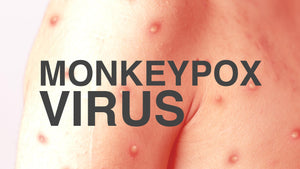
How to Pick the Right Surgical Suture?
WHAT ARE SURGICAL SUTURES? Surgical Suture is a medical device used for the apposition of bodily tissues after injury and surgery. It is an important procedure that ensures the healing of tissues and wounds after a medical procedure has been performed. Suturing ensures that the tissue to be healed can withstand stress until complete healing takes place. It also prevents leakage of blood from lacerated tissues and minimizes scar formation. Sutures may be of synthetic or natural origin and can be either absorbed by the body or stay in the body until they are removed. Some are also treated with a coating, softening, or antibacterial agent to add to their properties. Medical professionals have a choice between sutures of various materials, shapes, sizes, etc. and the choice between them is based on the location, environment, and requirement of the area to be sutured.
SUTURING TECHNIQUES
i. Interrupted simple – It is the most commonly used technique. It is done by inserting singly through the side of the area to be sutured and then tied. It is strong and can be used to close large wounds, areas of stress, etc.
ii. Simple Continuous/Running – The needle is reinserted so that the suture passes perpendicularly to the incision line below and obliquely above it. The knot is tied on the untightened end of the suture.
iii. Continuous Locking/Blanket – The suture is withdrawn through its own loop. The need for multiple knots is avoided and prevents excessive tightening.
iv. Vertical Mattress – It passes through deep and superficial levels of the skin. It is used for closing deep wounds.
v. Horizontal Mattress – It is used for closing bony deficiencies. The needle is passed from one end to another and back to the former and knotted. It may constrict the blood supply to the region.
vi. The figure of 8 – The needle is first inserted into the outer surface of the buccal flap followed by lingual flap It is used for extraction socket closure.
vii. Subcuticular Closure – It is used to suture deep wounds in layers. The knots are buried or inverted
viii. Continuous Subcuticular closure – Continuous lateral stitches are done beneath the epithelial layer. The ends of the suture are knotted. It is mainly used for cosmetic purposes
ix. Purse String suture - The tissue in the path of the suture is drawn in together in a circular pattern and ends are tied.
PARTS OF A SUTURE NEEDLE
A suture needle is constructed to have three parts – a point, a body, and a swage.
i. Point– It is the sharpest part of the surgical suture needle and penetrates the tissue.
ii. Body – It is the mid-portion and the strongest part
iii. Swage – the portion to which the suture material is attached.
CLASSIFICATION OF SUTURES Sutures is broadly divided into the following categories:
1. Based on Absorbability - Absorbable & Non-Absorbable Suture
a) Absorbable Sutures: These sutures are broken down in the body as healing progresses and eventually dissolves completely. Absorbability begins as a loss of tensile strength followed by the loss of mass and finally dissolution due to proteolytic enzyme action. This type of suture is not recommended when long term apposition of tissues is required. Furthermore, as the body might identify the suture as a foreign object, moderate tissue inflammation might occur. Factors responsible for the rate of absorption of absorbable sutures are:
- Type of Suture – plain gut is known to get absorbed faster than chromic gut
- Infection – A suture is absorbed more readily by an infected tissue when compared to an uninfected tissue
- Site of Suturing – Sutures are absorbed more rapidly in areas having increased proteolytic enzymatic activity like the stomach, cervix, and vagina.
Absorbable sutures are either made from specially processed animal materials or synthetic polymers such as polylactic acid (Vicryl), polyglycolic acid (Dexon), polyglycolide (Maxon) and polydioxanone (PDS).
b) Non-Absorbable Sutures: These sutures resist the body chemicals and enzymes and don’t get dissolved in the body. Non- absorbable sutures provide prolonged tensile strength to the tissue and maintain long term tissue apposition and healing. These sutures are used in cases where there’s a risk of an absorbable suture getting broken down too early. These include polypropylene, nylon (polyamide), polyester, PVDF, and stainless steel sutures. Non-Absorbable Sutures can be further divided into three categories;
Class I - These are silk or synthetic fibers with twisted/braided construction
Class II - These are cotton or linen fibers or coated natural or synthetic fibers. The coating does not add to the strength.
Class III - These are monofilament or multifilament metal fibers.
2. Based on Construction – Monofilament & Multifilament Sutures
a) Monofilament Sutures: Monofilament sutures provide better passage through tissues when weighed against multifilament sutures and cause lower tissue reaction. These are thin, smooth, and strong sutures that do not tend to harbor bacteria. There is no wicking and have no capillarity. However, handling of these sutures may be difficult. These include polypropylene, nylon, PVDF, stainless steel, poliglecaprone, and polydioxanone sutures.
b) Multifilament/ Braided Sutures: Multifilament sutures are made of several strands that are twisted or braided together and often provide better knot security when compared to monofilament sutures. They are usually pliable and easy to handle. There might be wicking of the suture and capillarity exists. Additionally, there is likely to be tissue trauma at the suturing site and bacteria can colonize the braided construction. These include PGA, polyglactin 910, silk, and polyester sutures.
3. Based on Coating – Coated & Uncoated Sutures A suture may be coated to increase its pliability, strength as well as for antimicrobial properties. Common suture coatings include beeswax, calcium stearate, and polycaprolactone. Infections occurring at the site of post-surgical incisions is a very common post-surgery complication and sutures coated with antimicrobials like triclosan may reduce infection at the incision site. There are several other factors that need to be considered by medical professionals before identifying the ideal suture for a surgical procedure. Some of these characteristics have been highlighted below;
- Pliability – Refers to the ease of handling of the suture
- Tensile Strength – Tensile strength of a suture refers to the force in pounds the suture can withstand before it breaks when it is knotted. The strength of the suture shouldn’t exceed the tensile strength of the tissue, but sutures should be as strong as the normal tissue strength of the site is sutured.
- Needle Type – Tapered: This type of needle passes through tissues by the means of stretching and is used for easily penetrable tissues like Peritoneum, Abdominal Viscera, etc. It minimizes tissue bleeding, tearing, and damage.
- - Cutting: It has two opposite cutting edges and is used to penetrate dense tissue.
- - Blunt: It has a blunt point design used to suture densely vascular tissue such as liver, kidneys, pancreas, etc.
- Tissue Reactivity – This refers to an inflammatory response of the body to the suture. It usually peaks in the first 2 to 7 days.
- USP Size - USP Size of the suture describes the needle diameter. Other factors such as the handling properties as well as tensile strength are affected by the diameter of the suture. The larger the number prefix, the smaller the diameter. For example, 7-0 is a much finer suture than 1-0. The surgical guidelines usually indicate the smallest diameter of the suture to be used that can adequately hold the wounded tissue. This reduces trauma and ensures the minimal foreign body has to be put into the body. The smaller the suture, the lesser the tensile strength.
- Material – Beyond the absorption profile of a suture, the type of material used in its construction also plays a significant role in deciding the suture for a procedure. Some of these have detailed below:
- Polyglactin 910 (Vicryl) - These are synthetic absorbable sutures where the absorption occurs by hydrolysis. They are generally considered stronger than gut sutures and can be made antibacterial with a coating of Triclosan. This suture can be used in contaminated and infected wounds particularly soft tissue ligation. However, these sutures are not recommended where the extended approximation is required.
- Nylon - These are synthetic sutures composed of long-chain aliphatic polymers and Nylon 6,6. They illicit minimum tissue inflammatory reactions and are commonly used for skin closure. The use of Nylon sutures is also indicated for soft tissue surgeries, ophthalmic surgery, cardiovascular surgeries, and neural tissue suturing. However, these sutures are also characterized by poor knot handling properties.
- Polypropylene – These sutures have high plasticity and don’t lose tensile strength over time. They are also inert in nature and result in minimal tissue reaction. Their use is indicated for soft tissue surgeries, ophthalmic surgery, cardiovascular and neural tissue suturing.
- Stainless Steel – These synthetic and monofilament sutures have great knot security. They offer high tensile strength retention and tissue compatibility. The use of these sutures is indicated for sternum closure as well as orthopedic surgeries.
- Catgut – These absorbable sutures are are manufactured using the submucosal fibrous layer of ovine intestines. As they are natural sutures, they elicit an inflammatory response from the body tissue. These sutures, on average have an absorption profile of 3-4 weeks and are indicated to be used for soft tissue ligation and approximation.
- Polyglyconate (Maxon) – These synthetic sutures are absorbable in nature and elicit minimum tissue drag. They are indicated to be used in general soft tissue surgeries, fascia closures, pediatric cardiovascular surgeries, and surgeries for patients with compromised healing. However, the use of these sutures is not indicated for cardiovascular surgeries, ophthalmic surgeries, neurological surgeries, and fixation of synthetic grafts.







